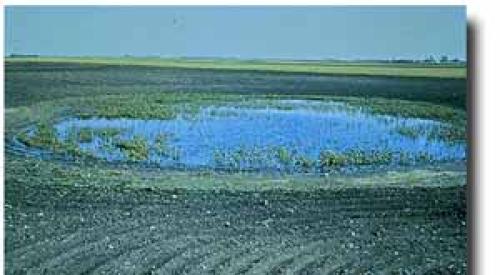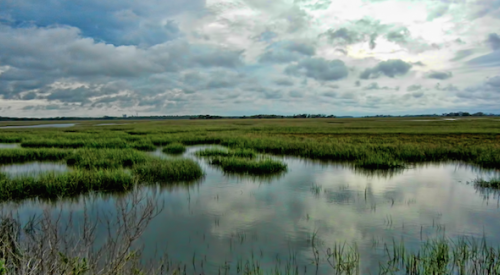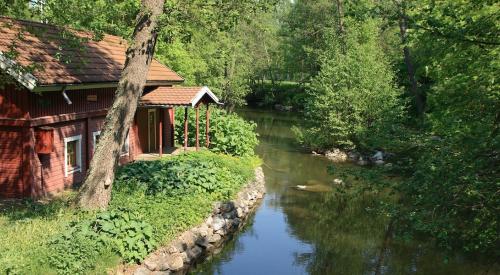WASHINGTON, March 27 -The nation's home builders are challenging a Dec. 8 federal regulatory ruling that an Arizona riverbed fed by sewers and storm runoff is a "traditional navigable water" - a decision with far-reaching implications for home buyers and property owners for miles around.
In concert with the Southern Arizona Home Builders Association and the Home Builders Association of Central Arizona, the National Association of Home Builders (NAHB) filed a lawsuit seeking an injunction against the United States Environmental Protection Agency and the Army Corps of Engineers. The complaint was filed March 23 in the U.S. District Court in Washington, D.C.
"The issue is not whether this water body should be protected under the Clean Water Act. But to call the Santa Cruz River a 'traditional navigable water' strains belief and counters 137 years of judicial decision making," said NAHB Chairman Joe Robson, a builder and developer in Tulsa, Okla.
"There is no permanent, flowing water. It can't be an 'interstate highway of commerce' - which is the definition of a traditional navigable water. The facts do not support the agencies' decision," Robson said.
There is another important issue raised in the lawsuit, Robson explained. The agencies made their decision behind closed doors with no opportunity for public scrutiny or input. "There was no notice given to any affected landowners, no one could submit evidence or offer other comments - the public was completely shut out of the process. The law says that rulings cannot happen that way," Robson said.
"The Obama Administration has pledged to ensure the public trust and establish a system of transparency, public participation, and collaboration. These federal actions regarding the Santa Cruz River are hardly an example of that," Robson said.
By designating the Santa Cruz River a "traditional navigable water," the federal agencies immediately gain jurisdiction over dry desert washes, arroyos and other water features within the 2.3 million acre Santa Cruz watershed that would not otherwise qualify as "waters of the United States" under the Clean Water Act. Right now, those areas are covered by state and local regulations.
Determinations of Clean Water Act jurisdiction come with a high price tag. As the United States Supreme Court has recognized, the average applicant for an individual Clean Water Act permit spends 788 days and $271,596 in completing the process, and the average applicant for a nationwide permit spends 313 days and $28,915 - not counting costs of mitigation or design changes. "As the housing sector and the economy struggle to recover during the current recession, the public must be afforded the opportunity to comment on the economic impact of federal government decisions," Robson said.
"Our nation's waters are precious. For that reason, Congress enacted the Clean Water Act in 1972 to protect the rivers, bays and lakes we depend on for interstate commerce," Robson said. "With this lawsuit, we are asking EPA and the Corps to limit their actions to the Act's intention."
In concert with the Southern Arizona Home Builders Association and the Home Builders Association of Central Arizona, the National Association of Home Builders (NAHB) filed a lawsuit seeking an injunction against the United States Environmental Protection Agency and the Army Corps of Engineers. The complaint was filed March 23 in the U.S. District Court in Washington, D.C.
"The issue is not whether this water body should be protected under the Clean Water Act. But to call the Santa Cruz River a 'traditional navigable water' strains belief and counters 137 years of judicial decision making," said NAHB Chairman Joe Robson, a builder and developer in Tulsa, Okla.
"There is no permanent, flowing water. It can't be an 'interstate highway of commerce' - which is the definition of a traditional navigable water. The facts do not support the agencies' decision," Robson said.
There is another important issue raised in the lawsuit, Robson explained. The agencies made their decision behind closed doors with no opportunity for public scrutiny or input. "There was no notice given to any affected landowners, no one could submit evidence or offer other comments - the public was completely shut out of the process. The law says that rulings cannot happen that way," Robson said.
"The Obama Administration has pledged to ensure the public trust and establish a system of transparency, public participation, and collaboration. These federal actions regarding the Santa Cruz River are hardly an example of that," Robson said.
By designating the Santa Cruz River a "traditional navigable water," the federal agencies immediately gain jurisdiction over dry desert washes, arroyos and other water features within the 2.3 million acre Santa Cruz watershed that would not otherwise qualify as "waters of the United States" under the Clean Water Act. Right now, those areas are covered by state and local regulations.
Determinations of Clean Water Act jurisdiction come with a high price tag. As the United States Supreme Court has recognized, the average applicant for an individual Clean Water Act permit spends 788 days and $271,596 in completing the process, and the average applicant for a nationwide permit spends 313 days and $28,915 - not counting costs of mitigation or design changes. "As the housing sector and the economy struggle to recover during the current recession, the public must be afforded the opportunity to comment on the economic impact of federal government decisions," Robson said.
"Our nation's waters are precious. For that reason, Congress enacted the Clean Water Act in 1972 to protect the rivers, bays and lakes we depend on for interstate commerce," Robson said. "With this lawsuit, we are asking EPA and the Corps to limit their actions to the Act's intention."
PB Topical Ref












